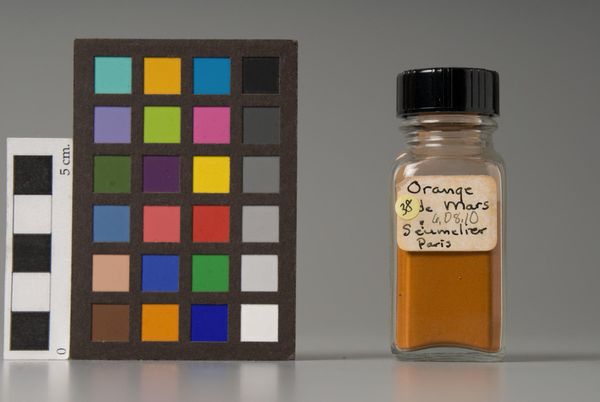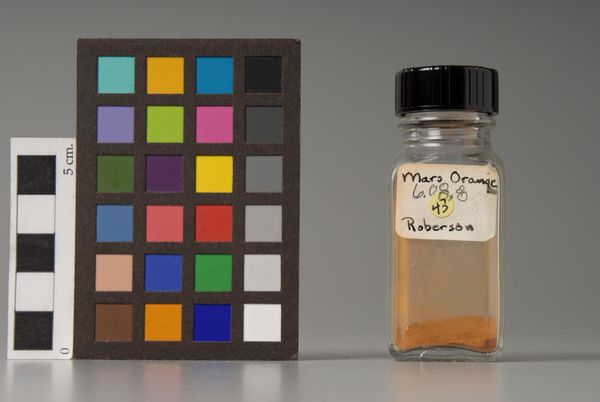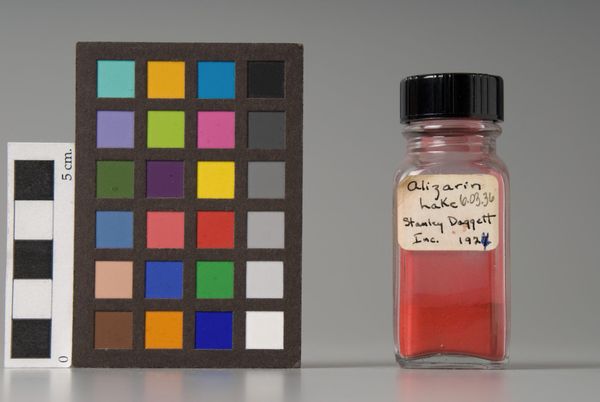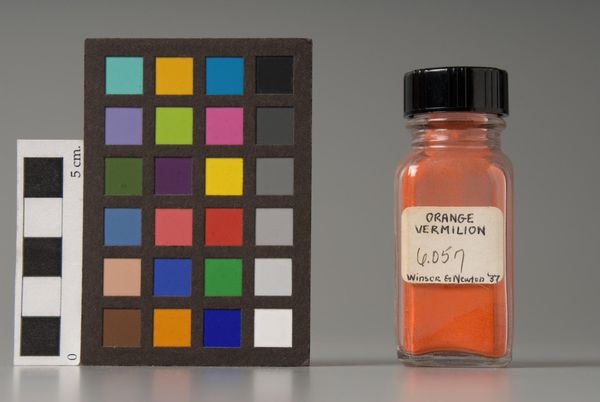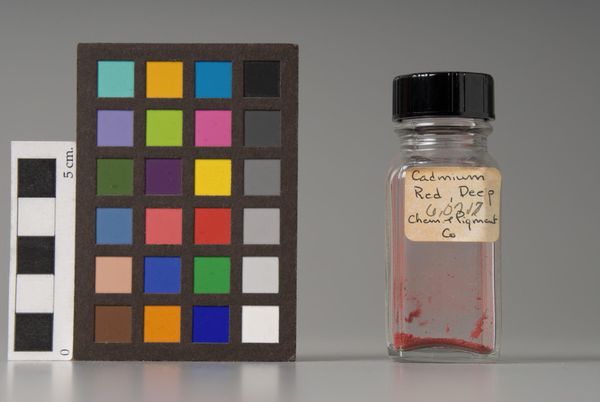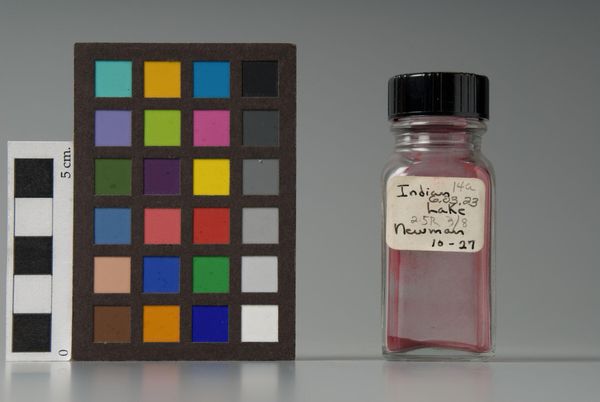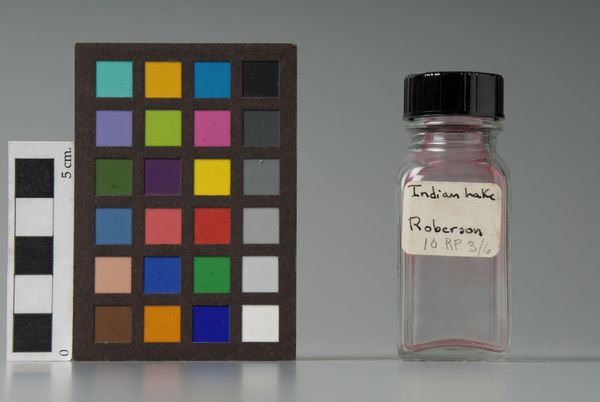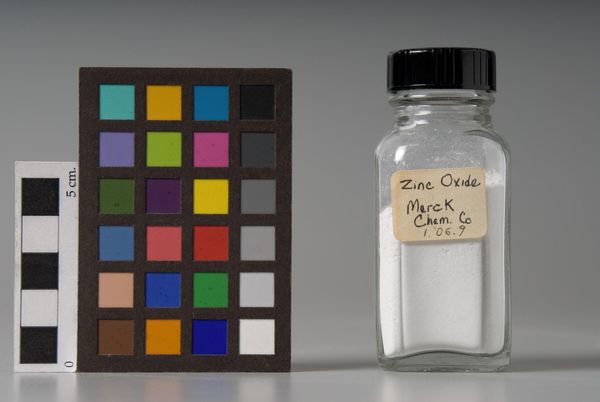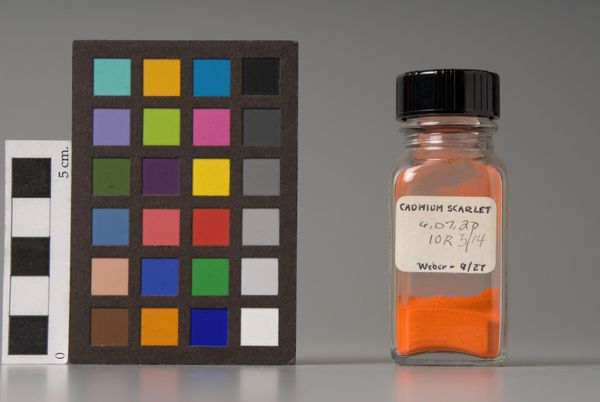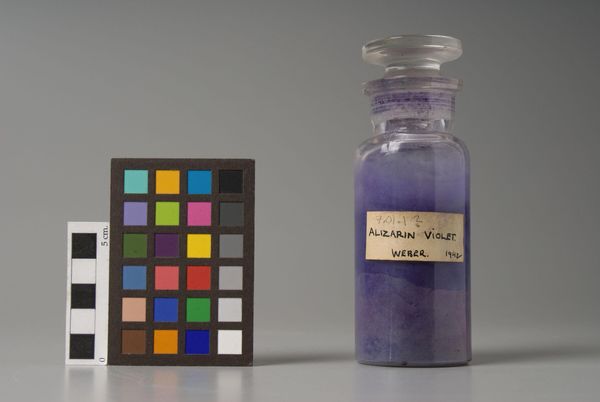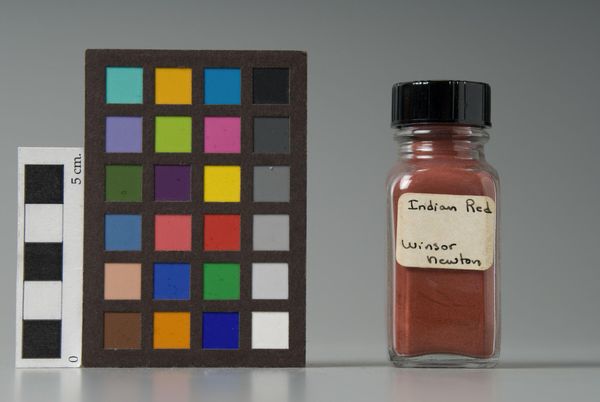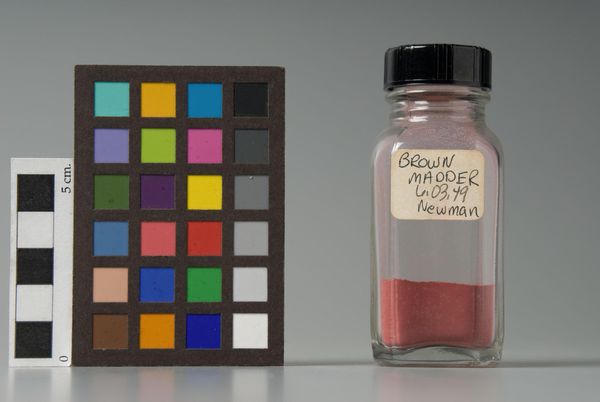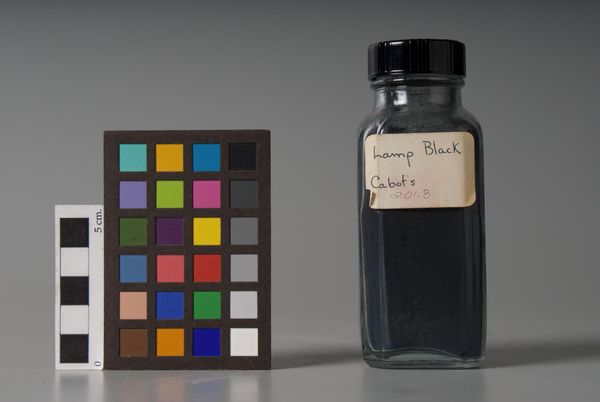
Copyright: CC0 1.0
Curator: Here, we have “Yellow Ochre,” produced by F. Weber & Company, Inc. The material dates back to March 4, 1941. Editor: It’s interesting how a simple pigment can hold such depth. Seeing it bottled like this evokes a sense of preservation, almost like an artifact. Curator: Exactly. The materiality of ochre itself is significant. It’s an earth pigment, directly linking artistic practice to the land and resources extracted from it. Editor: And historically, ochre connects us to early forms of artistic expression, think cave paintings. It reminds us of how art is linked to identity, culture, and the stories we tell. Curator: Absolutely, it highlights the labor involved in its creation and distribution. Weber & Company played a crucial role in supplying artists with the means of production. Editor: Right. And considering the date, 1941, this pigment was produced during wartime. What role might art have played in that era? Curator: A critical question. It prompts us to consider art as a form of resistance, propaganda, and a tool for shaping societal values. Editor: Seeing it this way makes me appreciate how much is embedded in a seemingly simple container of pigment.
Comments
No comments
Be the first to comment and join the conversation on the ultimate creative platform.

